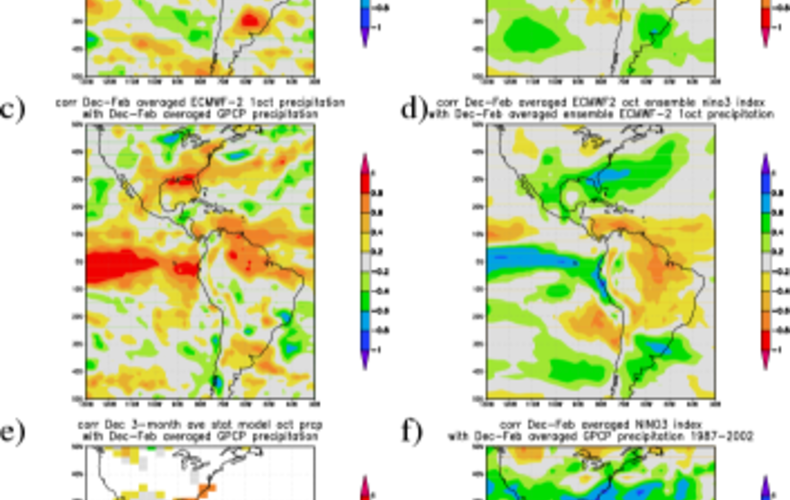
Since 1997 the European Centre for Medium-Range Weather Forecasts (ECMWF) has made seasonal forecasts with ensembles of a coupled ocean-atmosphere model (S1). In January 2002, a new version (S2) was introduced. For the calibration of these models, hindcasts have been performed starting in 1987, so that 15 years of hindcasts and forecasts are now available for verification.
The main cause of seasonal predictability is El Niño and La Niña perturbing the average weather in many regions and seasons throughout the world. As a baseline to compare the dynamical models with, a set of simple statistical models (STAT) is constructed. These are based on persistence and a lagged regression with the first few EOFs of SST 1901-1986 wherever the correlations are significant. The first EOF corresponds to ENSO, the second to decadal ENSO. The temperature model uses 1 EOF, the SLP model 5 EOFs and the precipitation model uses 2 EOFs but excludes persistence.
As the number of verification data points is very low (15), the simplest measure of skill is used: the correlation coefficient of the ensemble mean. To further reduce the sampling uncertainties we restrict ourselves to areas and seasons of known ENSO teleconnections.
The dynamical ECMWF models show better skill in 2-meter temperature forecasts over sea and the tropical land areas than STAT{}, but the modeled ENSO teleconnection pattern to North America is shifted relative to observations, leading to little pointwise skill. Precipitation forecasts of the ECMWF models are very good, better than those of the statistical model, in South-East Asia, the equatorial Pacific and in the Americas in December-February. In March-May the skill is lower.
Overall, S1(S2) show better skill than STAT at lead time 2 months in 29(32) out of 40 regions and seasons of known ENSO teleconnections.
GJ van Oldenborgh, MA Balmaseda, L Ferranti, TN Stockdale, DLT Anderson. Evaluation of atmospheric fields from the ECMWF seasonal forecasts over a 15 year period
Status: published, Journal: J. Climate, Volume: 18, Year: 2005, First page: 5188, Last page: 5198